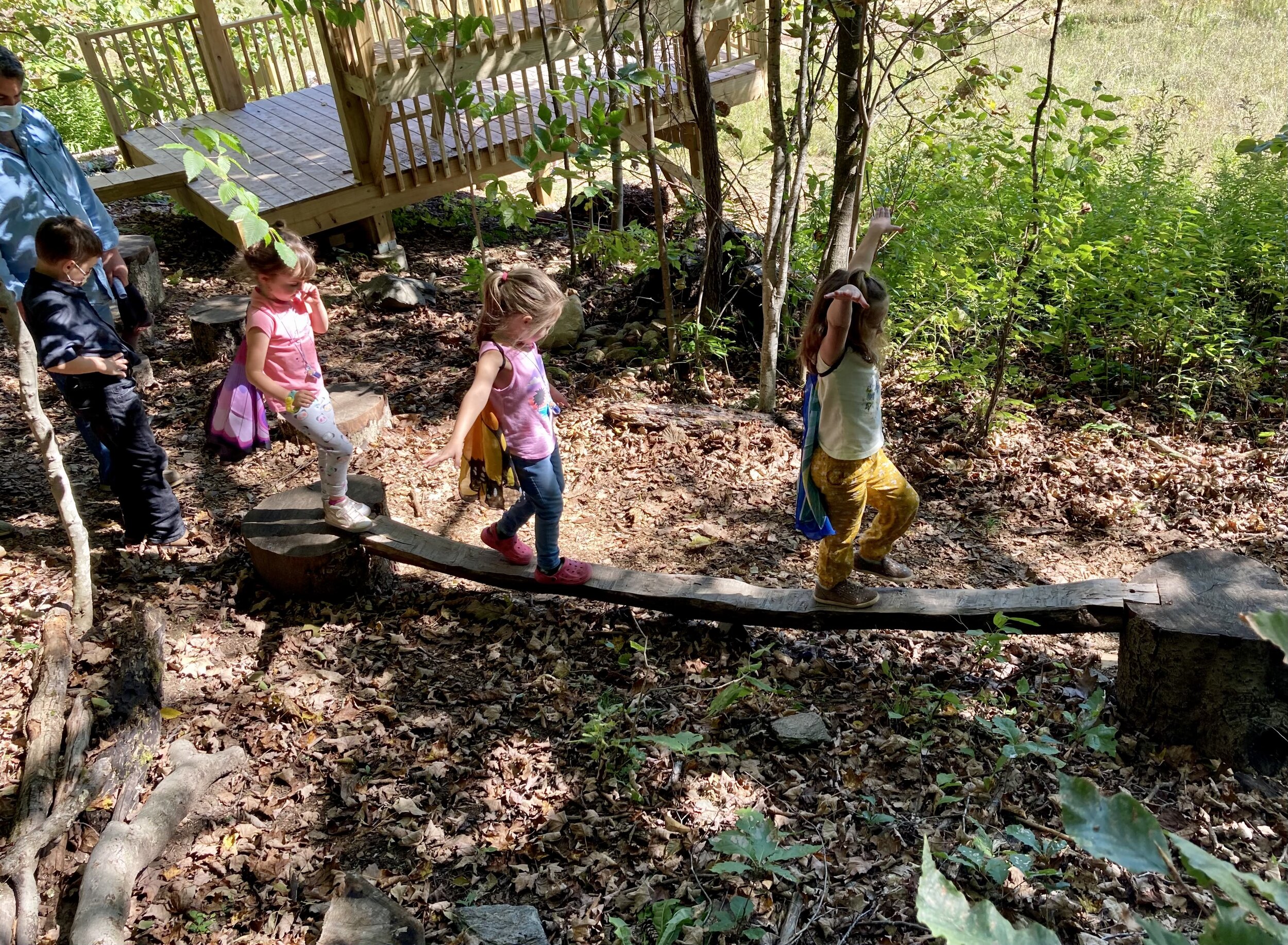Fall 2023 Update: Chapman Meadow Pond & Magic Forest Playscape Expansion
The museum’s wetland restoration project and playscape expansion have entered an exciting new phase!
The success of our Spring Frog Appeal helped build both funds and momentum to finalize the many details behind a project of this scale. After countless hours of brainstorming and planning over the last three years by the museum ”meadow-mittee” and staff, we have broken ground in a big way. Over the last several weeks, the meadow has undergone its biggest transformation yet with the construction of a new pond, creation of one-of-kind natural play features, and new paths. (Learn more about the scope of the project here.)
We worked closely with excavators Thad and Jan Guild of TMG Enterprises, an artful and talented husband and wife team, who have been invaluable from planning to execution. With excavators as their paint brushes and the meadow as their canvas, their mindful work has been truly amazing to watch from strategic placement of dead log debris in the pond to precise boulder placement around the kids' bear den. They are also sculpting our existing meadow trails so they are easier to navigate, including around the new pond and up to the Magic Forest Playscape.
These new unique features will provide transformative ways for visitors of all ages to explore, play, rest, and learn in the Chapman Meadow.
While conservation of the habitat around the Museum is important, providing space for learners and explorers to develop a conservation mindset has a farther-reaching impact. That’s why expanding the Magic Forest Playscape is one of our strategic priorities. Kids who have frequent access to unstructured play in natural spaces are far more likely to develop a conservation mindset as adults. Moreso, nature play areas help kids develop in many other ways, including in “creative, physical, social/emotional, and spiritual…” domains, says Ken Finch, Museum board member and founder of Green Hearts Institute for Nature in Childhood.
New Playscape features include:
Bear den and tunnel
Parent seating areas
Play campsite
Boulder piles and earth mounds
Sand pit
We are continuing to plant native wetland and meadow species, as well as manage invasive plant species. Why is this important? Wetlands have immense value to Vermont ecosystems and watersheds. Even small wetlands can slow water in big storms and trap nutrients, creating rich habitats for species that thrive near the water and diversity of wetlands.
Last spring, we planted over a hundred new, native, woody species in the buffer zone around our wetland – and we’ll continue to increase species diversity in the Chapman Meadow. Recently, we had the amazing help of students from the Compass School to remove a section of tough invasive tasks – tedious work that involves proper identification, removal, and careful disposal.
These are all big steps forward – but the work will continue even when the excavation is done. We’re in the early stages of building a long-term meadow & wetland management plan so families, students, and our local wildlife neighbors can continue to learn and enjoy these habitats for many years to come. We are also always thinking about exciting new features for the Playscape. Potential projects include more water features, a berry-picking patch, climbing trees, a sunflower grove, and grass hide-outs.
There is still ample opportunity to support this ongoing project! Consider a donation, and we encourage you to visit, the work in progress and find a connection to all living things in this corner of Vermont.
A special thanks to Jim McClammer of Connecticut Valley Environmental Services. Jim was crucial in our plans meeting important wetland protection regulations and being ecologically-minded with existing habitat and future habitat considerations.





